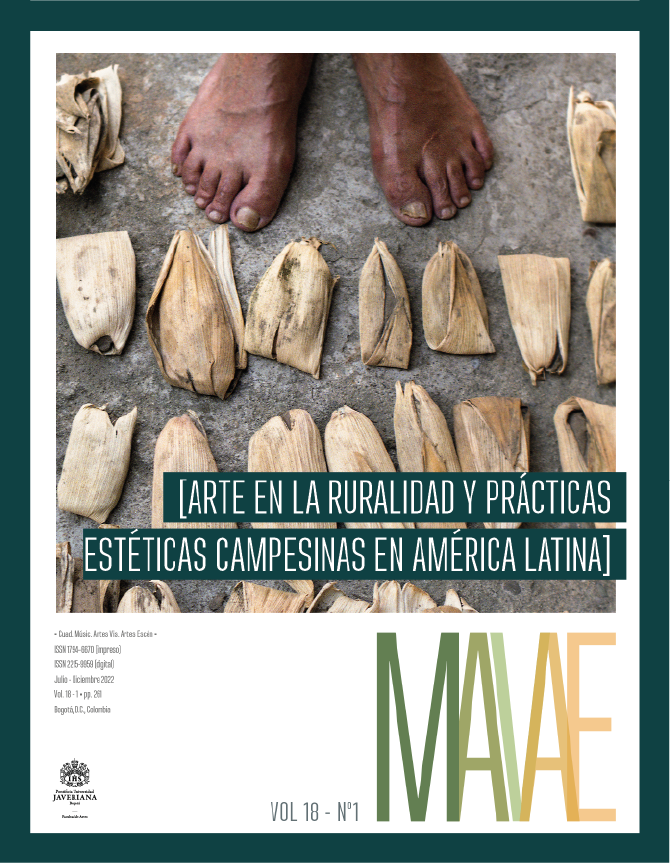Abstract
Thanks to the baskets made of gaita plants (Rhipidocladum geminatum), we can define a space allowing us to understand the articulations and trajectories that converge in order to make a basket. Likewise, we can recognize and broaden the knowledge about the dimensions of the peasant life that is born near the paramo and how the communities are related to it through the occupation of making baskets. Based on ethnographic theories, the practice of making baskets is presented herein as an ecologic intertwining, a symmetric involvement between humans and things, that results from a cognitive, embodied and situated phenomenon. Objects like the baskets that are born in rural contexts materialize the relational complexity of the human technical activities and reshape spatialities allowing us to ask some question about the limits of the human, our relationships to the nature and how other species are constituent elements to us. Objects born in the countryside are an overlapping of spatial attributes allowing us to understand these sorts of materialities that have advanced some way to be recognized as handicrafts. However, before reaching such definition, they have a place and a frame of specific relationships to living elements, to the nature and to some technologies that flow through the body and the act of dwelling.
This journal is registered under a Creative Commons Attribution 4.0 International Public License. Thus, this work may be reproduced, distributed, and publicly shared in digital format, as long as the names of the authors and Pontificia Universidad Javeriana are acknowledged. Others are allowed to quote, adapt, transform, auto-archive, republish, and create based on this material, for any purpose, provided the authorship is duly acknowledged, a link to the original work is provided, and it is specified if changes have been made. Pontificia Universidad Javeriana does not hold the rights of published works and the authors are solely responsible for the contents of their works; they keep the moral, intellectual, privacy, and publicity rights.
Approving the intervention of the work (review, copy-editing, translation, layout) and the following outreach, are granted through an use license and not through an assignment of rights. This means the journal and Pontificia Universidad Javeriana cannot be held responsible for any ethical malpractice by the authors. As a consequence of the protection granted by the use license, the journal is able to publish retractions or to correct information already published. Publishing contents in this journal does not generate royalties for contributors.


